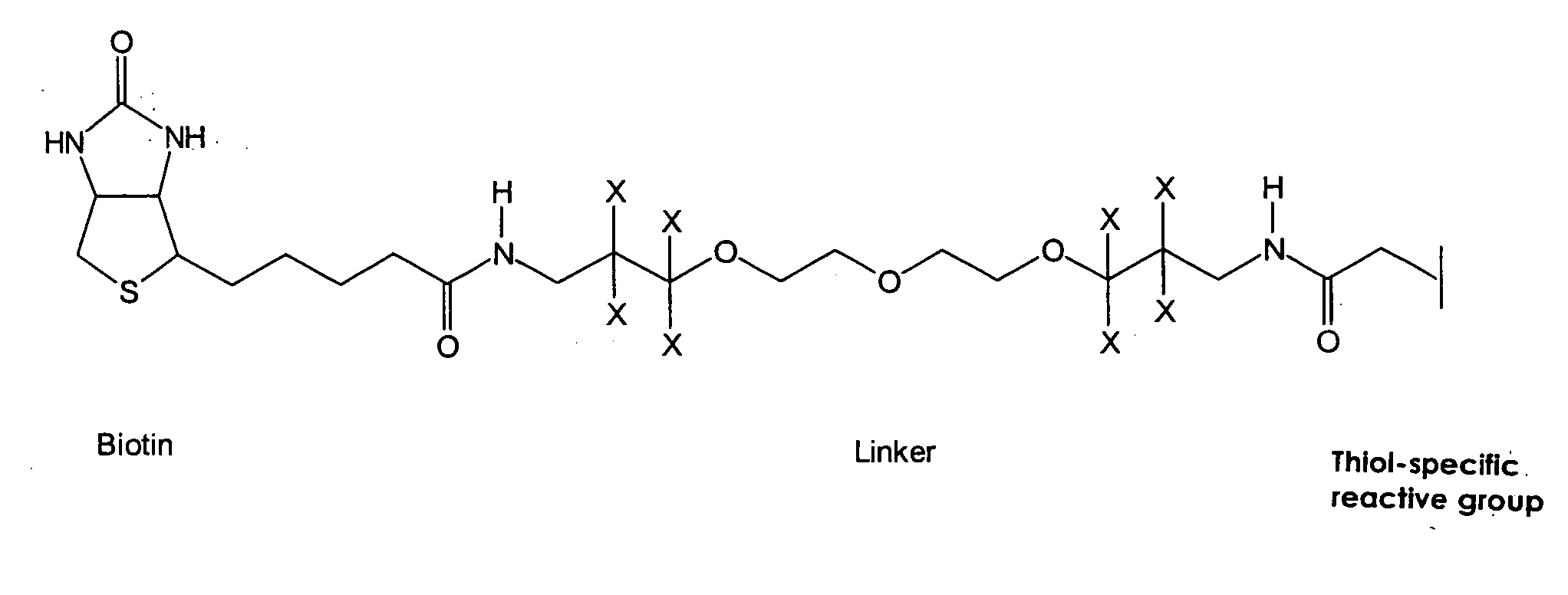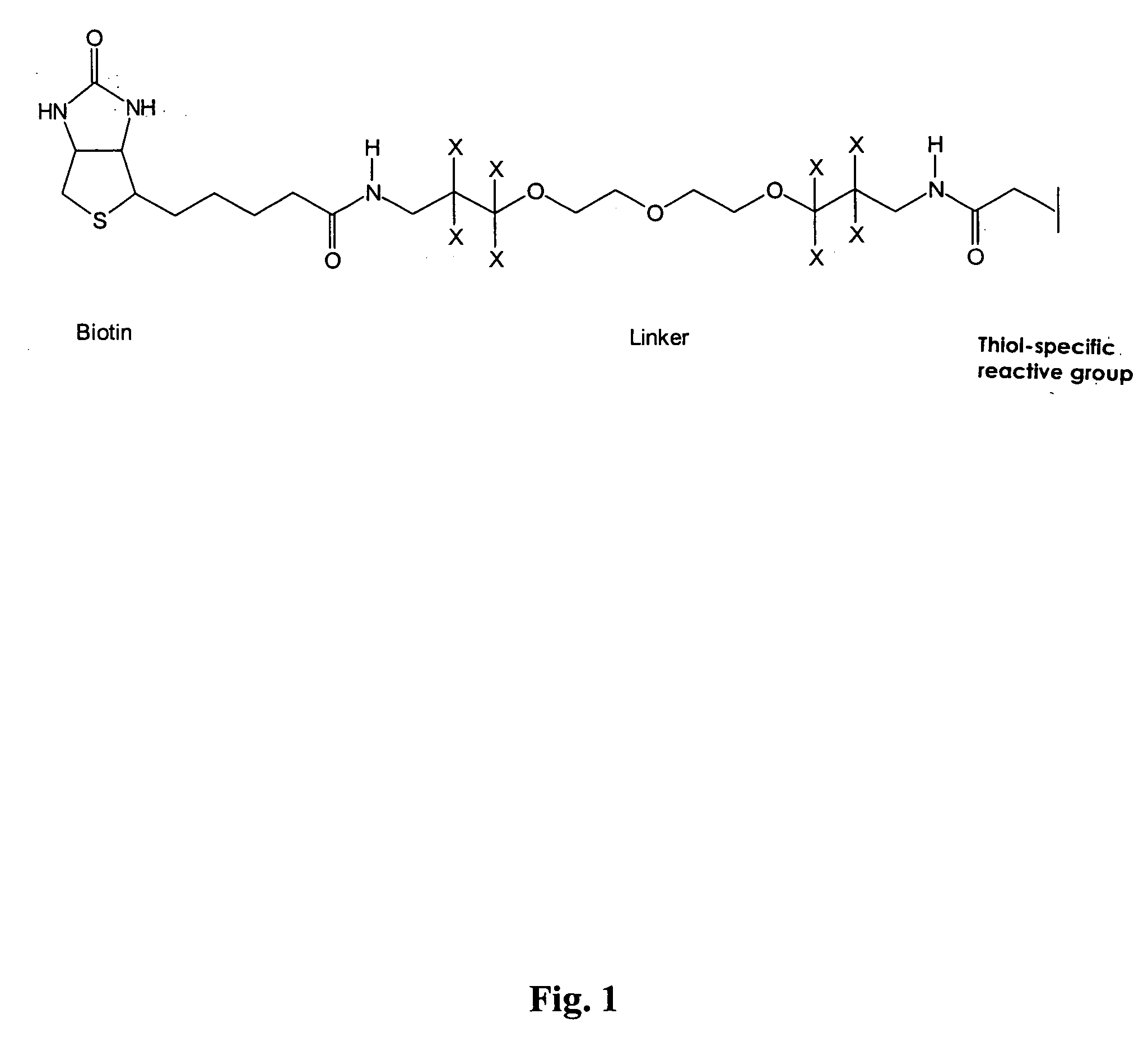Method and reagent for the specifically identifying and quantifying one or more proteins in a sample
- Summary
- Abstract
- Description
- Claims
- Application Information
AI Technical Summary
Problems solved by technology
Method used
Image
Examples
Embodiment Construction
Synthesis Planning—Preparatory Works
[0068] Aim of this synthesis is the preparation of a double C-substituted tetraaza-macrocycle. Starting from an amino-protected lysine-hydroxysuccinimide ester (2), the di-lysine-derivative (3) being internally connected by a peptide bond is obtained by reacting two equivalents of said ester (2) with one equivalent of ethylene diamine. Removing the protection from two amino functions provides the one component for the cyclization reaction, the mesylation of ethylene glycol provides the other component. In a subsequent [1+1]-cyclocondensation, one obtains the double C-substituted tetraazadicarbonyl-cycle (4). By reducing the two carbonyl-functions, one finally obtains the tetraaza-cycle (1), which can be provided with further functions at both side chains.
Concept of the Experiment:
[0069] Aim of these experiments was the synthesis and application of new functional markers for the identification and quantification of cell proteins. These marker...
PUM
 Login to View More
Login to View More Abstract
Description
Claims
Application Information
 Login to View More
Login to View More - R&D
- Intellectual Property
- Life Sciences
- Materials
- Tech Scout
- Unparalleled Data Quality
- Higher Quality Content
- 60% Fewer Hallucinations
Browse by: Latest US Patents, China's latest patents, Technical Efficacy Thesaurus, Application Domain, Technology Topic, Popular Technical Reports.
© 2025 PatSnap. All rights reserved.Legal|Privacy policy|Modern Slavery Act Transparency Statement|Sitemap|About US| Contact US: help@patsnap.com



